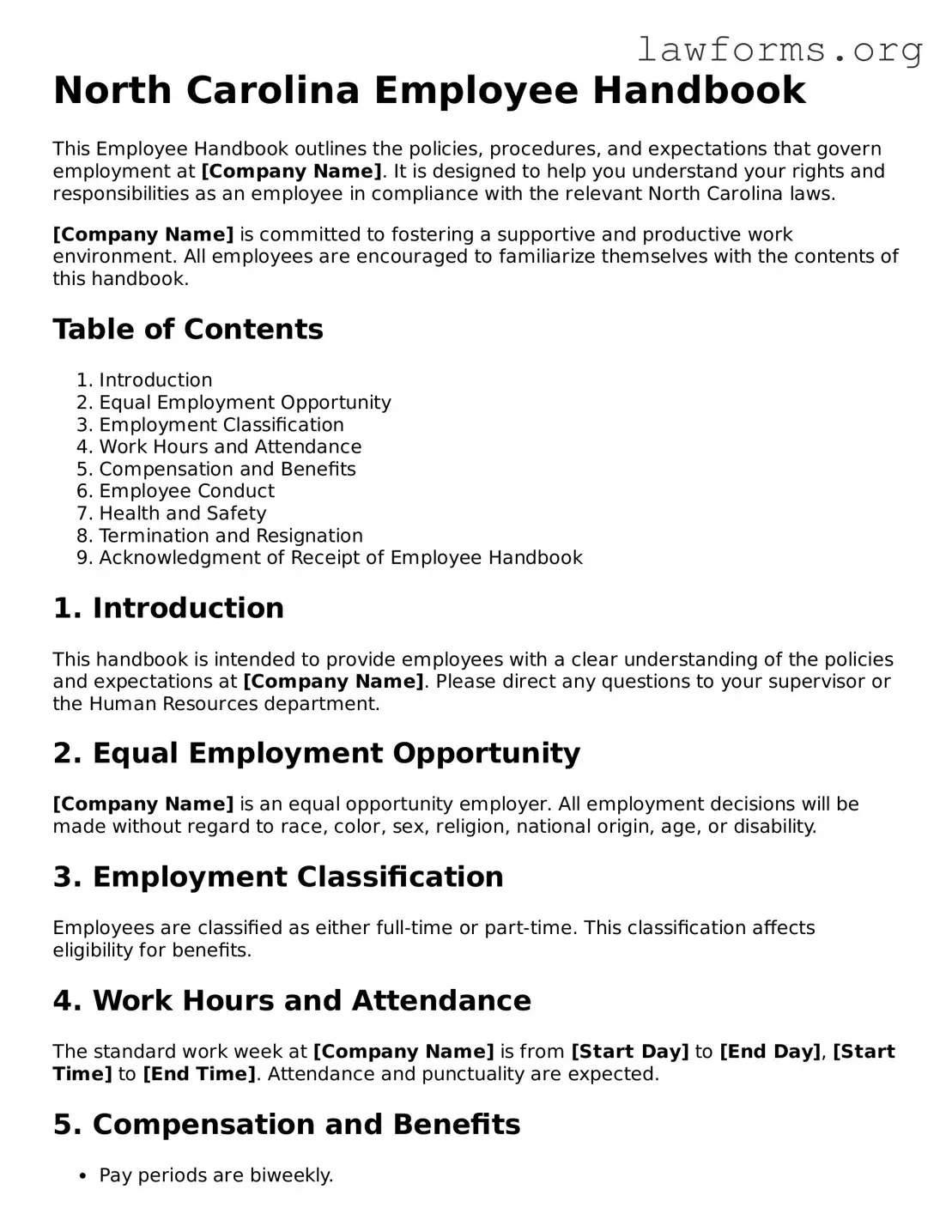North Carolina Employee Handbook
This Employee Handbook outlines the policies, procedures, and expectations that govern employment at [Company Name]. It is designed to help you understand your rights and responsibilities as an employee in compliance with the relevant North Carolina laws.
[Company Name] is committed to fostering a supportive and productive work environment. All employees are encouraged to familiarize themselves with the contents of this handbook.
Table of Contents
- Introduction
- Equal Employment Opportunity
- Employment Classification
- Work Hours and Attendance
- Compensation and Benefits
- Employee Conduct
- Health and Safety
- Termination and Resignation
- Acknowledgment of Receipt of Employee Handbook
1. Introduction
This handbook is intended to provide employees with a clear understanding of the policies and expectations at [Company Name]. Please direct any questions to your supervisor or the Human Resources department.
2. Equal Employment Opportunity
[Company Name] is an equal opportunity employer. All employment decisions will be made without regard to race, color, sex, religion, national origin, age, or disability.
3. Employment Classification
Employees are classified as either full-time or part-time. This classification affects eligibility for benefits.
4. Work Hours and Attendance
The standard work week at [Company Name] is from [Start Day] to [End Day], [Start Time] to [End Time]. Attendance and punctuality are expected.
5. Compensation and Benefits
- Pay periods are biweekly.
- Overtime is paid in accordance with state and federal law.
- Health benefits are offered to eligible employees.
6. Employee Conduct
All employees must adhere to standards of conduct that promote a positive work environment. Harassment and discrimination of any kind will not be tolerated.
7. Health and Safety
[Company Name] is committed to maintaining a safe workplace. Employees should report any unsafe conditions or practices to management immediately.
8. Termination and Resignation
Employees who decide to resign should provide [Notice Period] notice. Termination may occur based on performance or conduct.
9. Acknowledgment of Receipt of Employee Handbook
By signing below, you acknowledge that you have received and reviewed this Employee Handbook:
____________________________
Employee Signature: [Employee Name]
Date: [Date]
